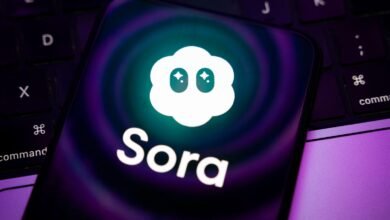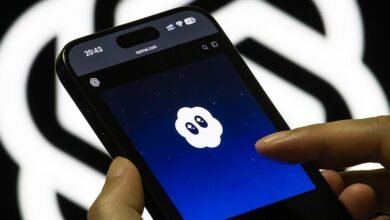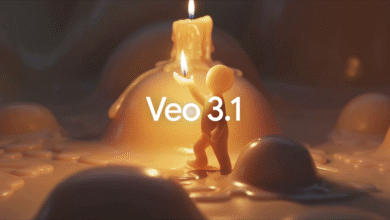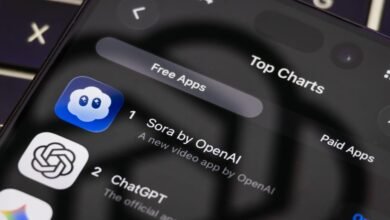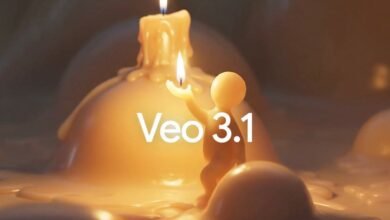OpenAI’s Deepfake TikTok Blurs Reality Beyond Recognition

▼ Summary
– OpenAI has launched Sora 2, an AI video and audio generation system that creates realistic deepfakes, including a social media app for this purpose.
– The new model significantly improves reliability, accurately following user prompts and generating synchronized audio with video in multiple languages.
– Sora 2 features enhanced physics intelligence, simulating realistic scenarios like fluid dynamics and buoyancy, moving closer to being a “world simulator.”
– The accompanying Sora app allows users to create and share AI-generated videos using “Cameos,” with controls for likeness usage and content moderation.
– Despite safety measures like watermarks and content restrictions, concerns remain about potential misuse for deepfakes, misinformation, and copyright issues.
OpenAI’s latest AI video tool, Sora 2, blurs the line between reality and simulation with startlingly realistic deepfake videos, raising urgent questions about digital authenticity and misinformation. During a recent demonstration, the system produced a convincing clip of CEO Sam Altman interacting with an imaginary oversized juice box, a moment indistinguishable from genuine footage to the untrained eye. This new platform, described by its creators as a potential “ChatGPT moment for video generation,” allows users to create custom videos featuring real people’s likenesses through a dedicated social app.
Sora 2 represents a significant leap beyond its predecessor, which launched in February 2024. According to Bill Peebles, who leads the Sora project, earlier versions operated like a “slot machine” where results rarely matched user prompts. The updated model delivers dramatically improved accuracy and reliability. The most notable upgrade enables synchronized audio generation, producing not only background sounds and effects but also dialogue in multiple languages that aligns perfectly with video content.
Available through Sora.com with a premium “Sora 2 Pro” tier for ChatGPT Pro subscribers, the technology will soon offer API access for developers. The accompanying Sora social application, currently rolling out in the United States and Canada through an invitation system, strongly resembles TikTok’s interface with its vertical scrolling feed and personalized “For You” recommendations.
OpenAI’s team emphasized their progress in simulating realistic physics, citing examples like accurately rendering backflips on paddleboards with proper fluid dynamics. However, this very capability amplifies concerns about malicious deepfake creation. The platform’s “Cameos” feature allows users to record themselves through the iOS app, capturing head movements and voice samples that then become available for AI-generated video remixes.
During internal testing, OpenAI employees reportedly replaced traditional communication methods like text messages and emojis with Sora-generated videos. The demonstration included fabricated advertisements, fictional conversations between individuals, and fake news segments, all appearing remarkably authentic. While earlier AI video systems often produced noticeable flaws like extra fingers, these artifacts appear largely resolved in the new model.
The social platform incorporates several privacy safeguards. Users control who can create videos using their likeness, ranging from personal use only to broader permissions. People maintain co-ownership of their digital likeness and can revoke access or remove videos at any time. Future updates may require approval before videos featuring someone’s likeness can be published, though this feature isn’t currently implemented.
Parental controls allow restricted feeds, direct message management, and interrupted scrolling experiences for younger users. Similar to TikTok’s remix culture, the platform encourages content recreation while currently limiting videos to ten seconds for standard users, with extended durations planned for Pro subscribers.
OpenAI states that all Sora-generated content carries identification markers, including metadata, moving watermarks, and internal detection tools. Screen recording remains disabled within the app, though potential workarounds remain a concern. For public figures, the system prohibits unauthorized likeness usage unless the individual has personally uploaded a Cameo and granted explicit consent.
The company maintains restrictions against generating explicit content and moderates outputs for policy violations and copyright issues. However, historical precedents suggest determined users often circumvent such limitations, as seen with previous AI systems that generated inappropriate content despite safeguards. Copyright approaches appear to follow OpenAI’s existing image-generation policy, requiring rights holders to opt out rather than proactively seeking permissions.
As this technology becomes more accessible, the fundamental challenge shifts to developing reliable methods for distinguishing authentic content from AI-generated simulations in an increasingly ambiguous digital landscape.
(Source: The Verge)
